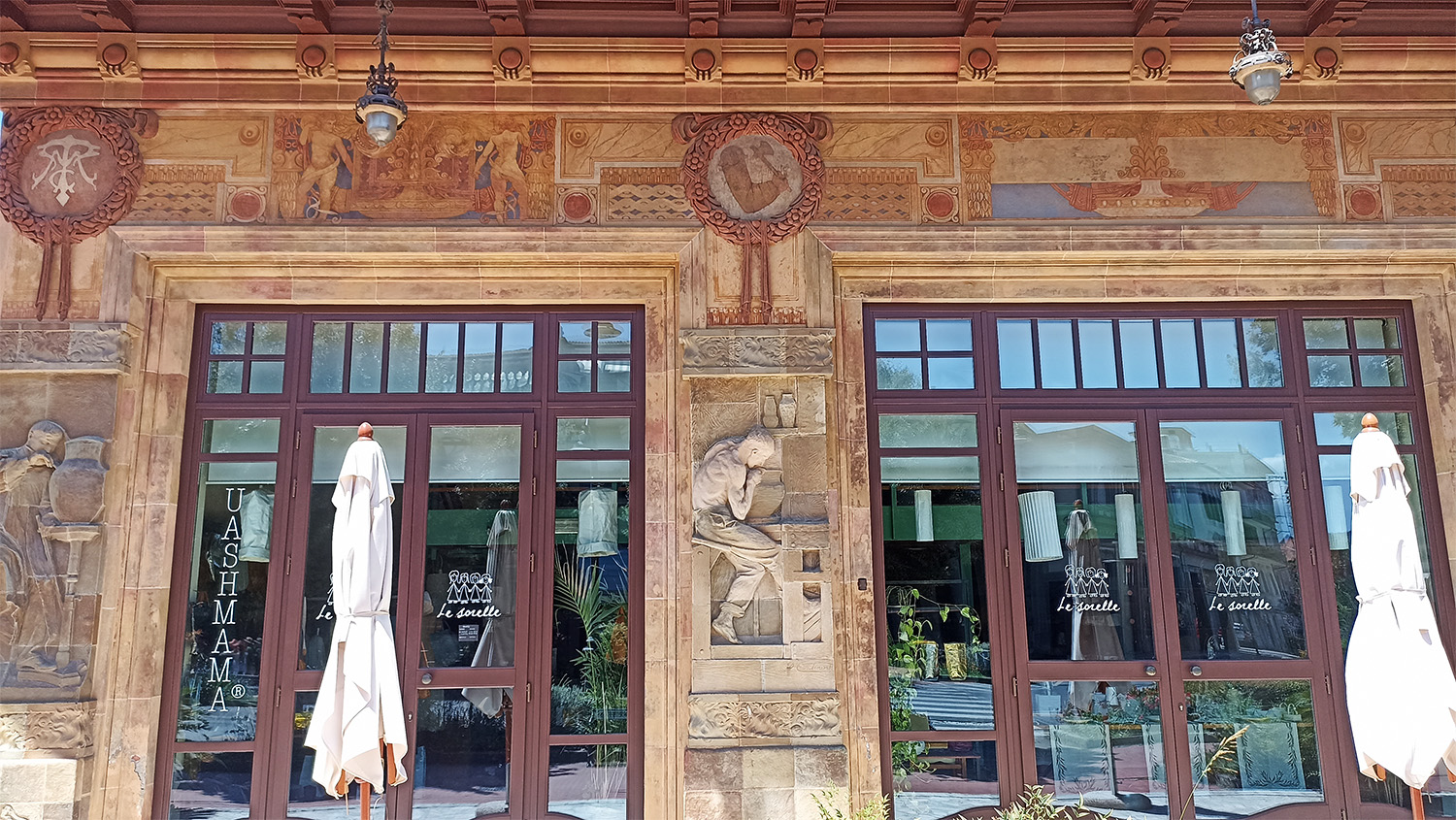Padiglioncino dei Sali
Viale Giuseppe Verdi, 45, 51016 Montecatini Terme PT, Italia
Monument complex
Description
Along Viale Giuseppe Verdi, near the homonymous Theater, there is the Padiglioncino dei Sali, built in 1903 to be used for the sale of the famous salts extracted from the Tamerici spring.
The project was designed by architect Giulio Bernardini, who drew inspiration from the shops in Bad Kissingen.
On the façade of the building, four sandstone panels were made by the Manifattura Arte della Ceramica of Galileo Chini to decorate their own pavilion at the International Exhibition of Decorative Arts in Turin in 1902.
Executed - and signed - by Domenico Trentacoste, a Palermo sculptor active in Florence, the bas-reliefs depict four male figures representing the art of the potter, that is, the activity of the ceramist.
In the last of them, Trentacoste portrays Galileo himself listening to the Muses "...depicting Chini who, with admirable constancy, profound artistic feeling, and a clear awareness of the duties imposed by the past and the future, directs the thriving industry."
The Florentine factory is the first and only one in those years to experiment with the use of stoneware for architecture, in the name of its properties of impermeability, hardness, and sobriety. It is Chini who wants to present the bas-reliefs on that precise occasion in Turin, wishing to "... expose stoneware for the first time in Italy as a material suitable for wall decoration and art pottery as already adopted abroad."
The bas-reliefs immediately became an integral part of the Padiglioncino dei Sali, which, at the time of its creation, housed three shops, one of which was used for the sale of salts and Tamerici waters. A second was intended for the sale of various objects, while in the third one could buy ceramics produced by the Florentine company.
On the pedestals of the facade of the Padiglioncino, one can recognize the pomegranates, a symbol of the Manufactory, wrapped in tongues of fire, evocative of the flames of the furnaces, while the skeletons of animal nature allude to the concept of Nature, or rather the natural processes related to the processing of ceramics and to the procedures related to the ancient technique of decoration, which, through the application of a mixture of metallic salts and clay diluted with wine vinegar, and a special firing, produces iridescent chromatic effects, of golden yellow, ruby red, silver, a technique called "luster."
The bas-reliefs immediately became an integral part of the Padiglioncino dei Sali, which, at the time of its creation, housed three shops, one of which was used for the sale of salts and Tamerici waters. A second was intended for the sale of various objects, while in the third one could buy ceramics produced by the Florentine company.
On the pedestals of the facade of the Padiglioncino, one can recognize the pomegranates, a symbol of the Manufactory, wrapped in tongues of fire, evocative of the flames of the furnaces, while the skeletons of animal nature allude to the concept of Nature, or rather the natural processes related to the processing of ceramics and to the procedures related to the ancient technique of decoration, which, through the application of a mixture of metallic salts and clay diluted with wine vinegar, and a special firing, produces iridescent chromatic effects, of golden yellow, ruby red, silver, a technique called "luster."
On the corner pillars, a vase decorated with poppies from which reeds adorned with flowers emerge is stylized. The gutter, very protruding and with rounded corners, was made by the Michelotti carpentry of Pescia, very famous at the time, in a very resistant American wood, pitch-pine. Galileo Chini also executed the external and internal paintings on the Galileo Chini building. Even today, the advertising slogan "I SALI PURGATIVI DELLE TAMERICI VINCONO I SALI STRANIERI" ("The purgative Tamerici salts outperform foreign salts.") is visible on the side facing the entrance of the homonymous theater.
On the entablature there is a frieze with putti and vegetal motifs, while inside the Salt shop, no longer present but attested by a vintage photo from the photographic archive of the former Dino Scalabrino Art Academy, there were aquatic scenes with figures inspired by mythology emerging from the waves and water games.
Modalità di accesso
The facade and sides of the building are completely visible from Viale Verdi.
Inside there are privately-owned shops.
Suitable for: Families and kids Industry experts Elderly people Young people and adults
Access conditions: Accessible
Free Access
Public timetable
Related content
You may also like






